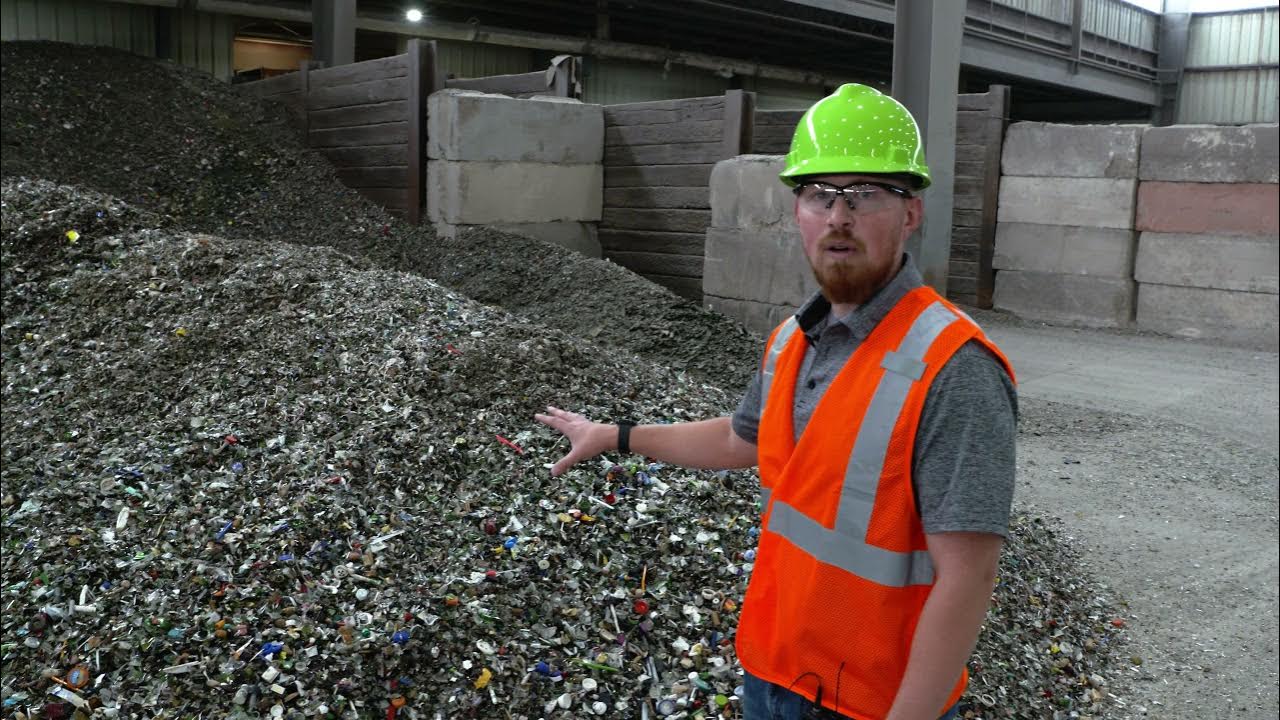How It's Made Glass
Summary
TLDRGlass, a product of nature, is made from raw materials like silica sand, soda ash, and limestone, which are combined with recycled glass (cullet) to create an eco-friendly and recyclable product. The glass-making process involves heating these elements to 1500°C, forming molten glass that is shaped into bottles and jars through precise molding techniques. Colored glass is crafted by adding small amounts of iron, sulfur, and carbon. The production process includes careful quality checks, and using cullet reduces energy consumption by up to 2.5% for every 10% included, highlighting glass’s sustainability.
Takeaways
- 🌿 Glass is made from natural materials, making it an eco-friendly option compared to metal or plastic.
- ♻️ Glass is highly recyclable and can be reused in various forms, like colored or clear glass.
- 🏗️ The primary ingredients for glass are silica sand (45%), soda ash (15%), and limestone (10%), creating a durable and strong product.
- 🔥 Glass is melted at extremely high temperatures (1500°C) in a furnace for 24 hours, resulting in molten glass with a honey-like consistency.
- 🔮 The molten glass is shaped into cylindrical globes before being processed into bottles or jars.
- 🔄 Bottles undergo a two-step molding process: a preliminary mold (parison) and a blow mold, which shapes them into their final form.
- 🎨 Colored glass includes small amounts of iron, sulfur, and carbon, while clear glass may feature raised designs created using special molds.
- 🔥 The bottles are passed through flames to prevent thermal shock and cracks, then gradually cooled in an annealing layer.
- 🔍 Automatic inspection systems use cameras and probes to check each bottle for imperfections, ensuring product quality.
- 💡 Up to 90% of the glass mix can be made from recycled glass (cullet), saving up to 2.5% energy for every 10% of recycled material used.
Q & A
What are the primary raw materials used in glass production?
-The primary raw materials for glass production are silica sand (about 45% of the mixture), soda ash (15%), and limestone (10%).
How does soda ash contribute to the glass-making process?
-Soda ash helps ensure the even melting of silica, playing a key role in the formation of the glass.
What role does limestone play in the glass mixture?
-Limestone imparts durability to the final glass product, strengthening it.
What is cullet, and how is it used in glass production?
-Cullet is recycled glass that is integrated into the manufacturing process, reducing the need for new raw materials and enhancing sustainability.
At what temperature is the glass mixture melted in the furnace?
-The glass mixture is melted in a furnace at around 1500°C.
What is the next step for molten glass after it emerges from the furnace?
-After emerging from the furnace, the molten glass is channeled at precise intervals, forming cylindrical globes destined to become bottles or jars.
How are the bottles or jars initially formed from molten glass?
-The molten glass is first shaped into a parison, a miniature version of the final bottle, which is then blown into its desired shape using compressed air.
What materials are added to produce colored glass bottles?
-Small amounts of iron, sulfur, and carbon are incorporated into the glass mixture to produce colored bottles.
How is thermal shock in the glass prevented during production?
-Bottles are passed through flames to prevent rapid cooling, which could induce cracks from thermal shock. They then enter an annealing layer to cool at a controlled rate.
What energy savings can be achieved by using cullet in the glass mixture?
-Using up to 90% cullet in the mixture can result in energy savings of up to 2.5% for every 10% of cullet used.
Outlines

Dieser Bereich ist nur für Premium-Benutzer verfügbar. Bitte führen Sie ein Upgrade durch, um auf diesen Abschnitt zuzugreifen.
Upgrade durchführenMindmap

Dieser Bereich ist nur für Premium-Benutzer verfügbar. Bitte führen Sie ein Upgrade durch, um auf diesen Abschnitt zuzugreifen.
Upgrade durchführenKeywords

Dieser Bereich ist nur für Premium-Benutzer verfügbar. Bitte führen Sie ein Upgrade durch, um auf diesen Abschnitt zuzugreifen.
Upgrade durchführenHighlights

Dieser Bereich ist nur für Premium-Benutzer verfügbar. Bitte führen Sie ein Upgrade durch, um auf diesen Abschnitt zuzugreifen.
Upgrade durchführenTranscripts

Dieser Bereich ist nur für Premium-Benutzer verfügbar. Bitte führen Sie ein Upgrade durch, um auf diesen Abschnitt zuzugreifen.
Upgrade durchführenWeitere ähnliche Videos ansehen
5.0 / 5 (0 votes)






